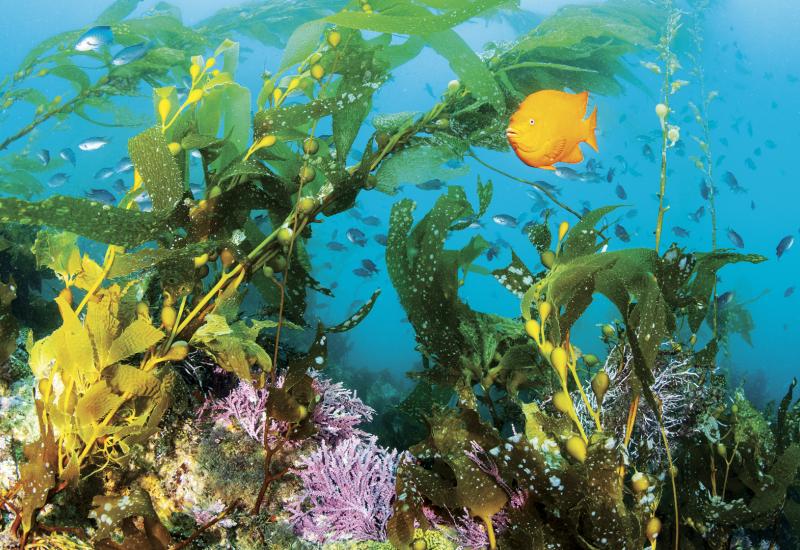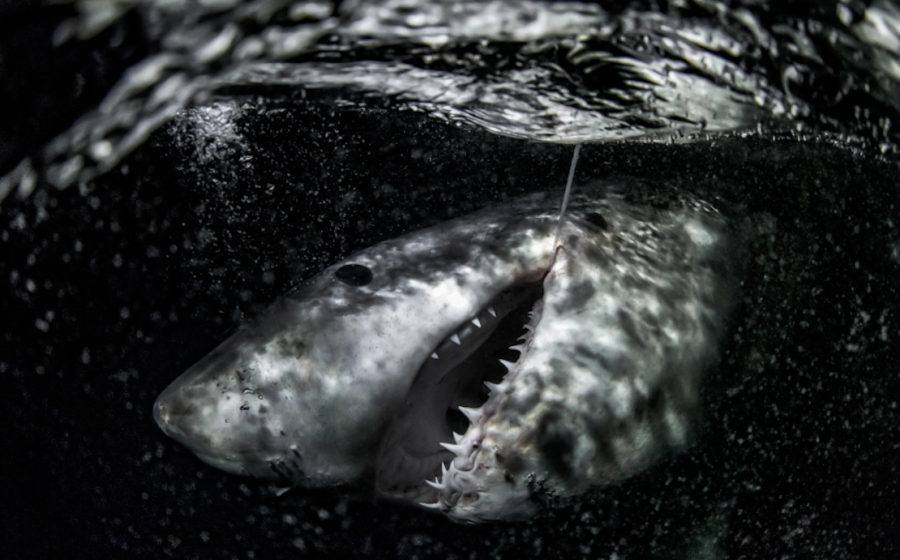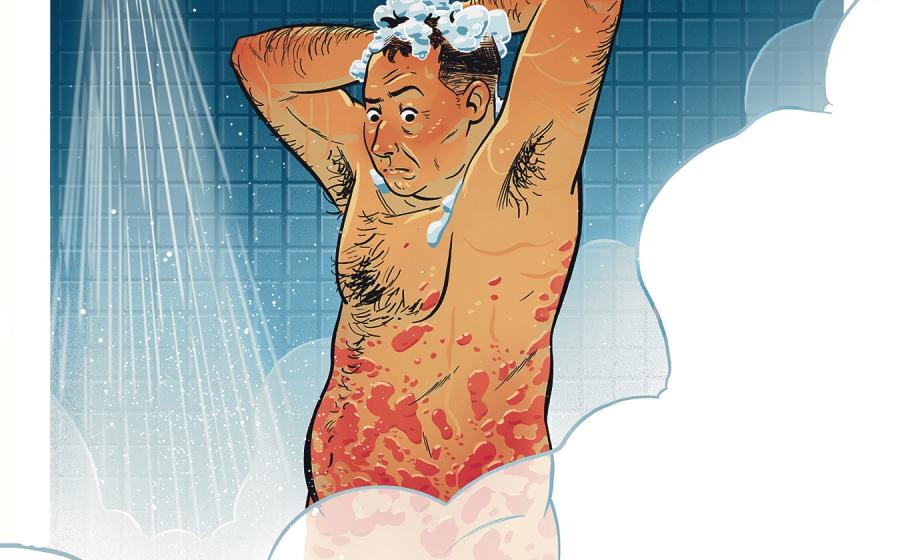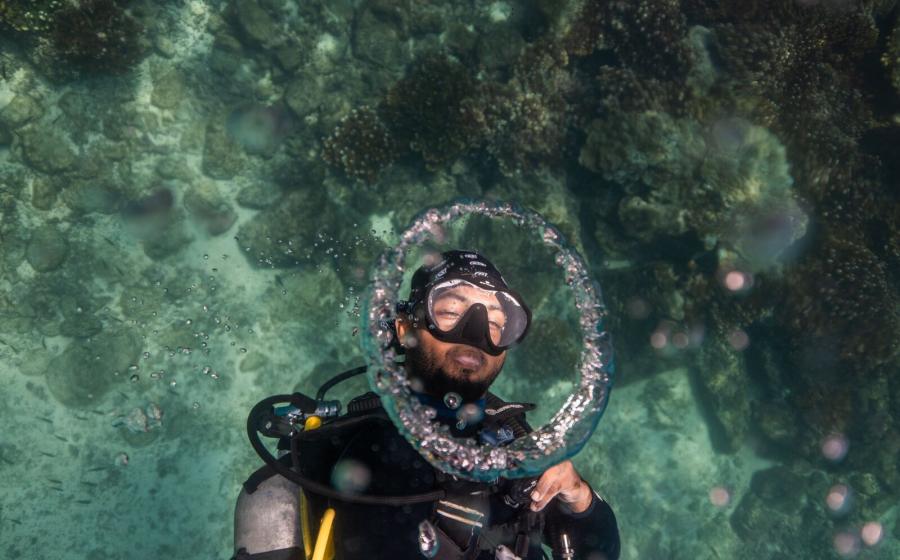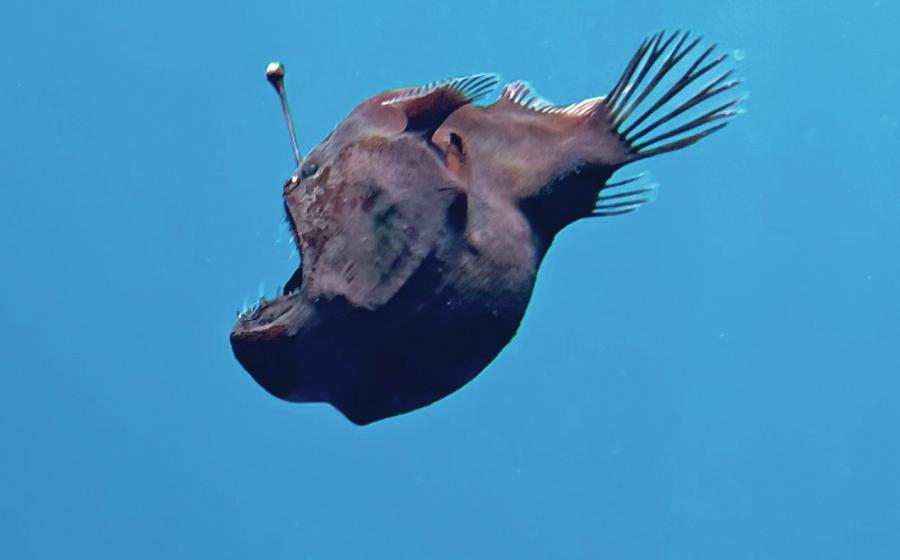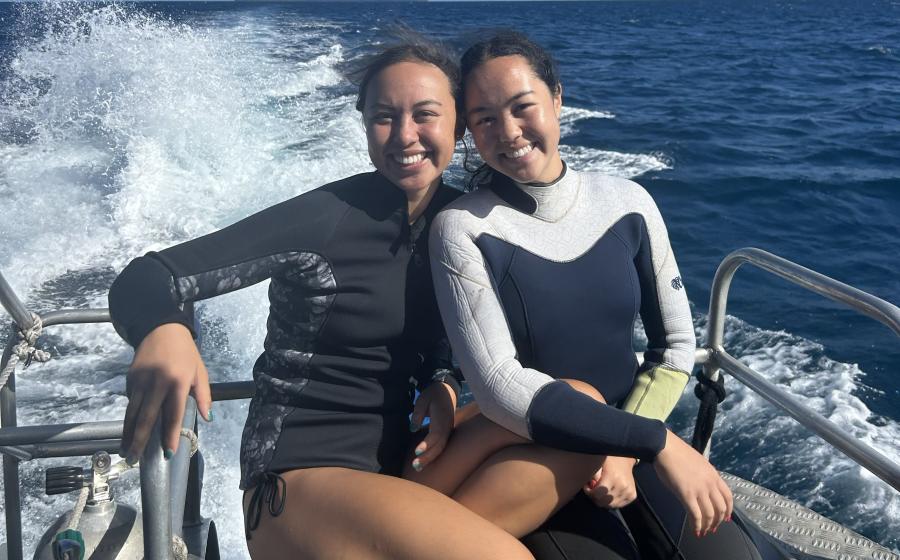3 Advanced Underwater Photo Composition Tips to Master
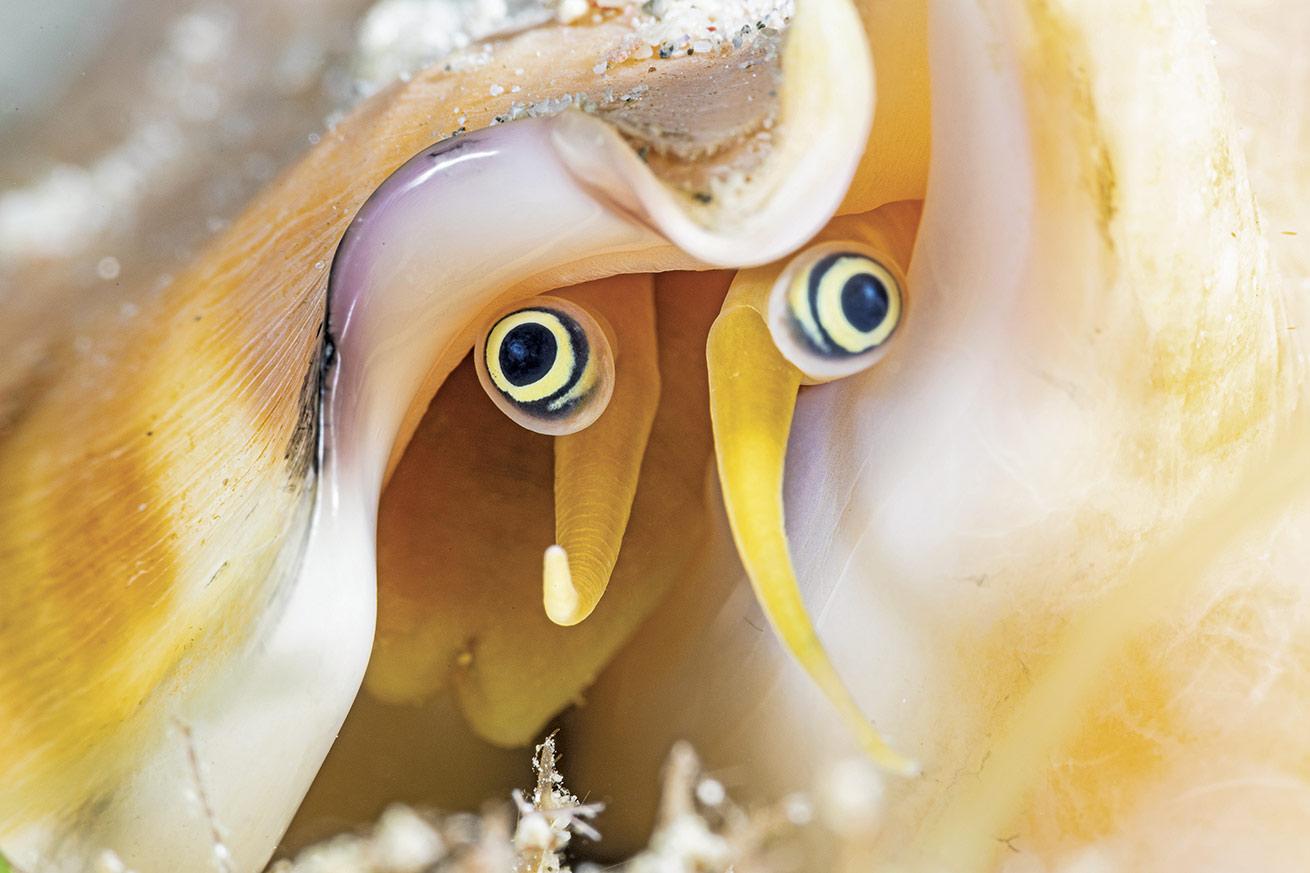
Brent DurandShooting at a low angle helps to make this vomer conch stand out.
In the April 2024 issue, we discussed basic photo composition. Today we’ll look at some advanced composition concepts that will help your photos capture the imagination of your viewers. You can think of compositional elements as building blocks that can be intentionally combined to make a strong image.
Background First
To make your subjects stand out, frame them to minimize distracting elements in the background. You can shoot at a low angle with blue water behind the subject, open your aperture to blur the background of a macro image, change angles to eliminate bubbles in the frame, create a black background, or use a snoot on your light or strobe to isolate the subject.
Many photographers actively seek to eliminate background elements. This is possible, but much more difficult underwater with marine life.
Related Reading: Best Destinations for Macro Diving

SeaLife Sea Dragon 5000+ with Color Boost
To restore vivid color to underwater scenes, a video light like this SeaLife Sea Dragon 5000+ or strobe will make otherwise lost hues pop.
Bold Hues
I’m partial to bright, colorful underwater photography, so I recommend seeking color in your compositions. Ideally, you will use a video light or strobe to vibrantly illuminate the subject and get away from the standard blue or green cast of ambient light at normal dive depths.
In The Know
Improving your photography comes with hours in the water, which means you’re hopefully starting to learn the basic behaviors of your common subjects. If a subject is moving and you’re composing for its current location, you have a high likelihood of missing the shot or capturing the back half of the animal. If you know the animal is moving in a circuit, favoring a certain perch, or that the cleaning station is open for business, set up for the shot you want and wait for the subject to move into the composition you envision. But if a nudibranch is headed into a crevasse, you don’t need to wait 30 minutes to see what it does—just move along and find someone more cooperative.
Related Reading: Intro to Underwater Photo Composition
Best Laid Plans
Many photographers strive to capture unique behavior. This might be feeding, mating, cleaning, fighting or tending eggs. Oftentimes, these behaviors include rapid movements, which require you to think ahead to compose your scene. For example, to capture a frogfish yawning, maintain a sharp focus on the eye but compose with plenty of open space where the mouth will expand. Take your time, consider your compositions and start creating better images on your next dive.



